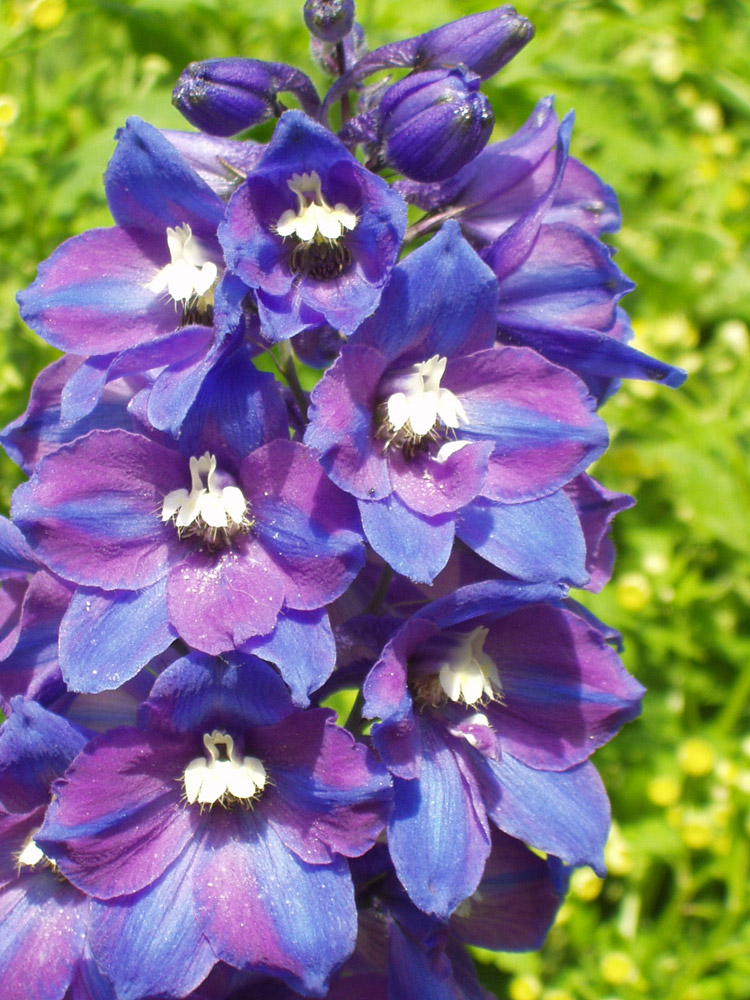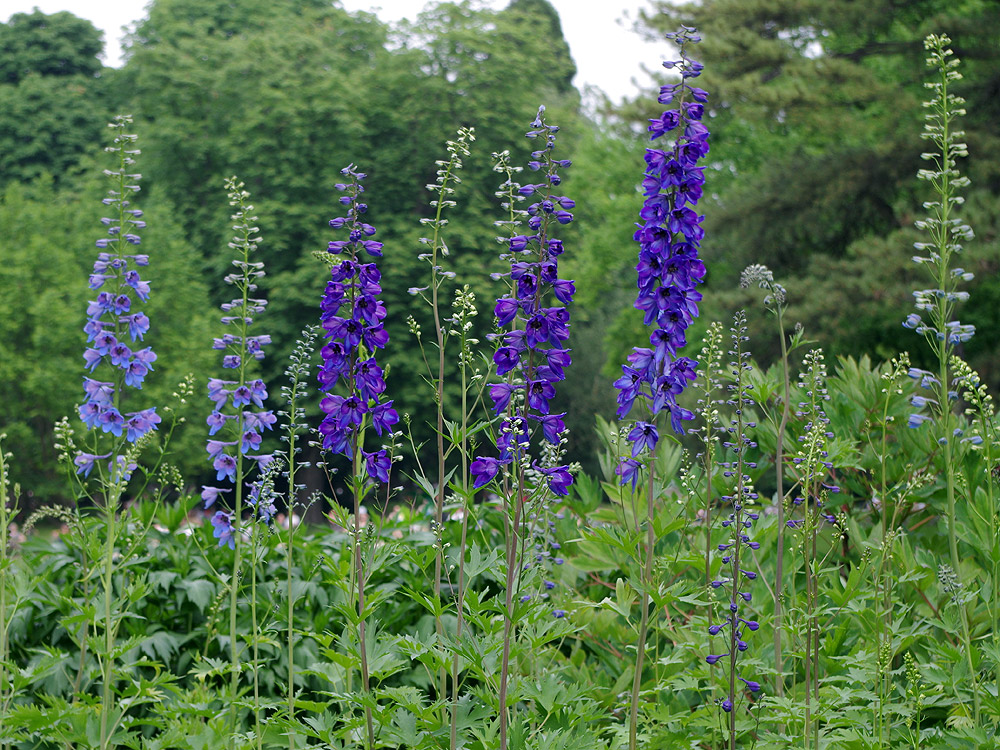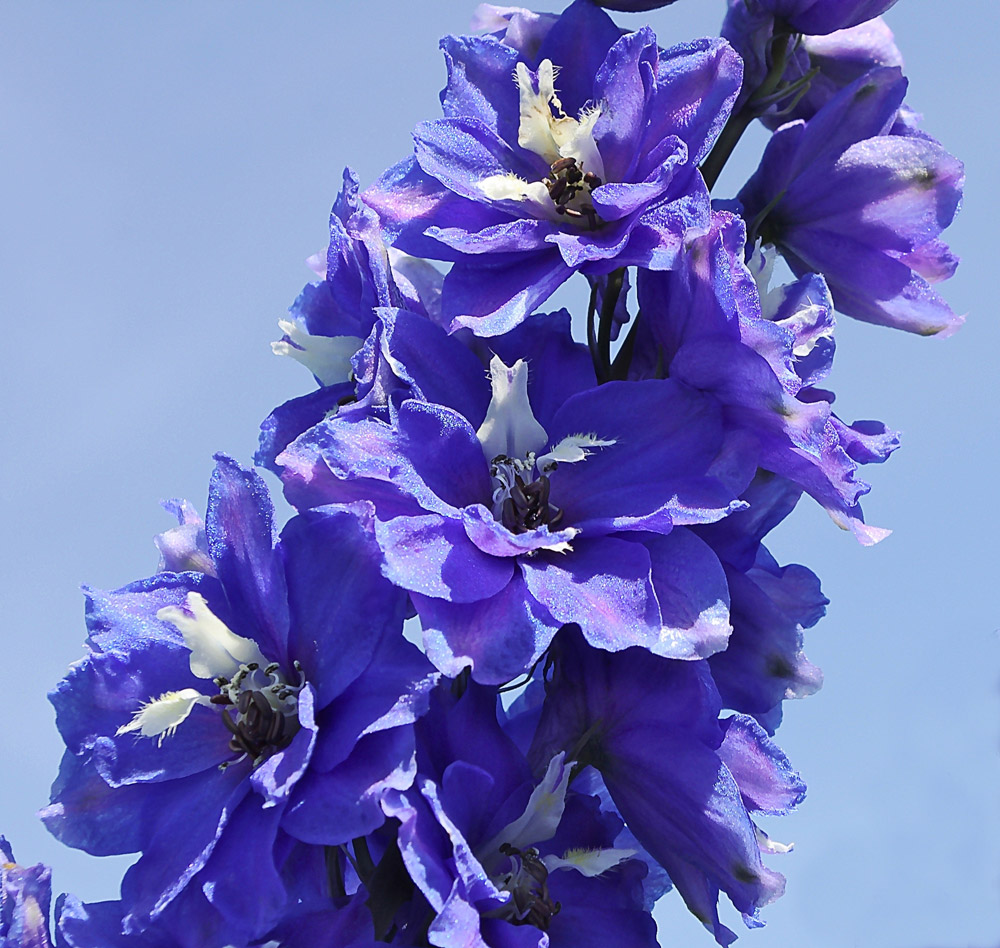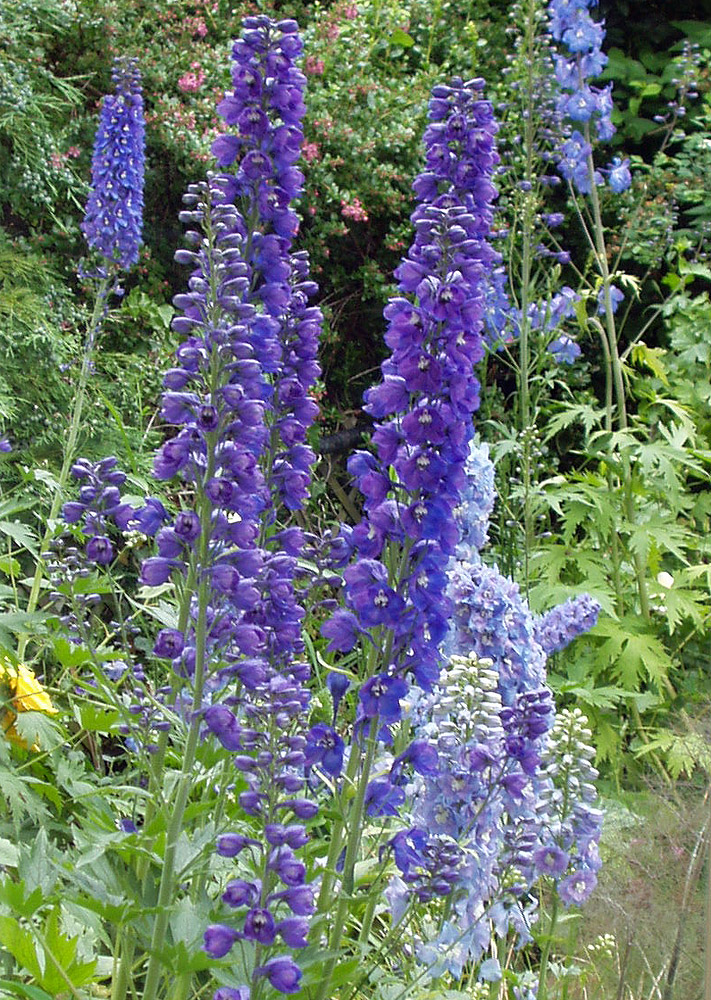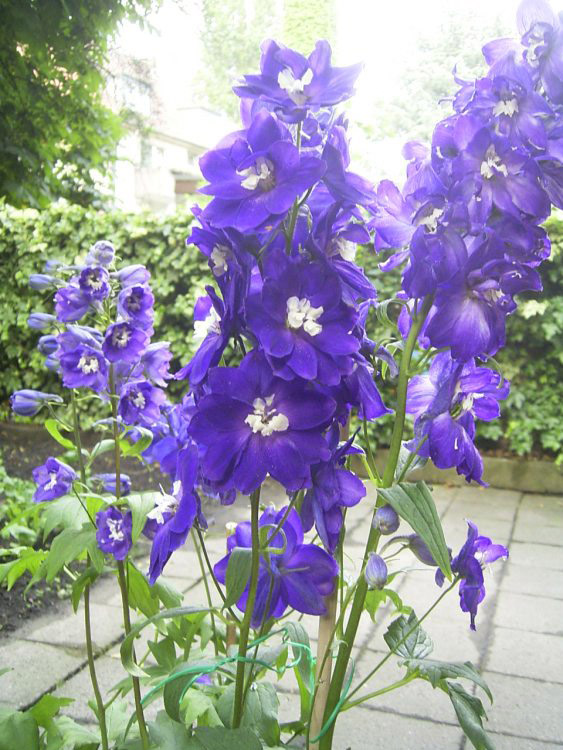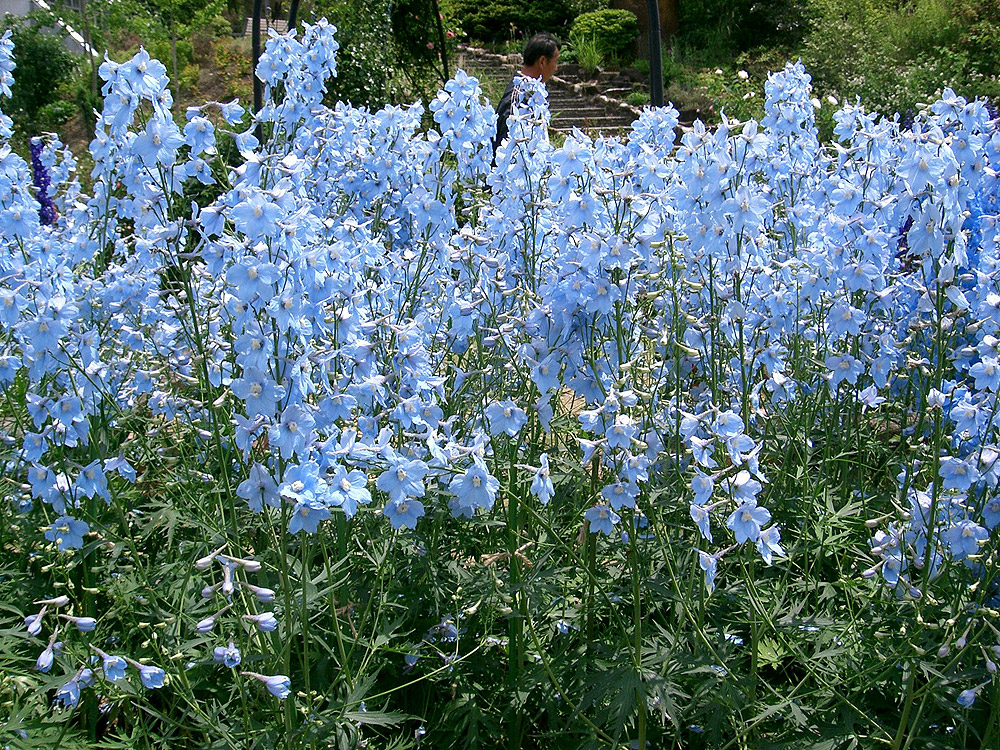Garden Plants, How and where to grow them
Perennials
Delphiniums
Tall, elegant spires in shades of blue, mauve, deep pink or white that have an stately presence in the border, always best in blues for my money though. Perennial Delphiniums grow from ground level to 4-5ft each year, a classic and favourite cottage garden flower.
Buy Delphinium plants | Buy Delphinium seeds
 Along with Gentians and Himalayan Poppies, these are
the archetypal blue flowers. Tall upright plants with long flower
spikes, may be perennials or some groups grown as annuals or
biennials. Large lobed and toothed leaves up to 8"
long and wide, flower spike (raceme) is often at least half
the height of the whole plant and consists of several dozen
individual flowers. Annual Delphiniums are sometimes referred
to as "Larkspur".
Along with Gentians and Himalayan Poppies, these are
the archetypal blue flowers. Tall upright plants with long flower
spikes, may be perennials or some groups grown as annuals or
biennials. Large lobed and toothed leaves up to 8"
long and wide, flower spike (raceme) is often at least half
the height of the whole plant and consists of several dozen
individual flowers. Annual Delphiniums are sometimes referred
to as "Larkspur".
- Height and spread: 1-2m x 45-90cm (3-6ft x 1 1/2-3ft) according to variety
- Soil: moist, fertile well-drained
- Position: full sun or partial shade, shelter from strong winds
- Rate of growth: medium
- Hardiness: fully hardy
- Flower colour: Classically in shades of blue, but also available in reds, pinks, pale yellows and even green (though some of us wonder why?). Flowers may be single or double.
- Flower size: from 2cm (3/4 inch) to 6cm (2 1/2 inches) across according to variety, larger at the bottom of the flowering spike becoming smaller towards the top
- Garden care: Grow towards the
back of a mixed border, stake with brushwood, inter-connecting
plant supports or a circle of canes with string when they
reach 30cm (12") in height, so they are supported but
can grow through them and hide the support. Taller specimens
will need individual staking to support the heavy and spectacular
flower spikes.
Strongly growing plants benefit from liquid fertiliser.
Particularly susceptible to slug damage in spring when emerging from the soil, this becomes less of a problem as the plants mature.
Cut back after flowering to ground level leaving small emerging side-shoots, these may give a second flowering in the autumn, though not as tall as the early summer flowers. Cut back to just above ground level in the autumn when the leaves start to die down.
Generally easy to grow, staking or support is the real key to success as flopped-over flower spikes are disappointing. - Uses: Borders, Cottage Gardens,
Modern Gardens
Buy Delphinium plants | Buy Delphinium seeds
Photo credits: (numbering left
to right top to bottom) 1, 2 and 3 - Paul Ward - angliangardener.co.uk
/ 4-Dinkum - Creative Commons Attribution 1.0 license. / 5-GFDL
- Creative Commons Attribution 3.0 Unported license. / 6-JLPC
- Creative Commons Attribution 3.0 Unported license. / 7-KENPEI
- Creative Commons Attribution 3.0 Unported license.
Copyright 2000 - present. All Rights Reserved | Privacy Policy Statement

